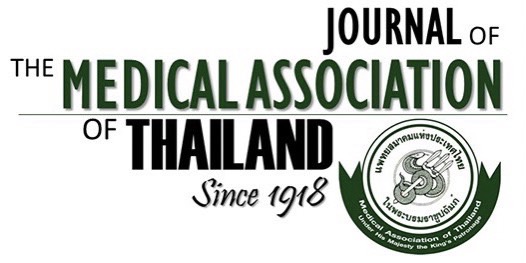MRI Study of Morphologic Features and CSF Hydrodynamics to Predict Ventriculoperitoneal Shunt Responsiveness in Normal Pressure Hydrocephalus
Theerapol Witthiwej MD*, Wiwithawan Sukeeyamanon MD**, Dittapong Songsaeng MD**, Chanon Ngamsombat MD**, Panida Charnchaowanish BSc**, Parunut Itthimathin MD*, Wattanachai Chotinaiwattarakul MD***, Orasa Chawalparit MD**
Affiliation : * Division of Neurosurgery, Department of Surgery, Faculty of Medicine Siriraj Hospital, Mahidol University, Bangkok, Thailand ** Department of Radiology, Faculty of Medicine Siriraj Hospital, Mahidol University, Bangkok, Thailand *** Division of Neurology, Department of Medicine, Faculty of Medicine Siriraj Hospital, Mahidol University, Bangkok, Thailand
Background : Selection of shunt responsive normal pressure hydrocephalus (NPH) patients using MRI findings is controversial.
Objective : To evaluate findings on conventional MRI and CSF flow study as predictors for shunt responsiveness in NPH
patients.
Material and Method: The retrospective study of 33 NPH patients with MRI CSF flow measurement was conducted.
Conventional MR imaging of these patients were evaluated and scored, and CSF flow parameters were analyzed to determine
the significant predictive parameters for clinical outcome of shunt responsiveness. Clinical evaluation was according to the
idiopathic normal pressure hydrocephalus grading scale (iNPHGS) before and after the operation. The most improved
clinical score during follow-up time (at least 1 year) was counted for evaluation. The distinct improvement was determined as
improvement of total iNPHGS equal or more than 3 scores.
Results : Thirty-three NPH patients with gait disturbance underwent VP shunting. Cognitive impairment and urinary incontinence
were found in 30 patients. Twenty-one patients show overall improvement. None of conventional MRI feature showed relation
with the clinical outcome except severe white matter change (Fazekas grade 2 to 3), which showed negative influence to
improvement. CFS parameters that can predict shunt responsiveness were mean velocity >27 mm/s, peak velocity >62 mm/
s, and CSF flux >0.22 mm3/s with sensitivity of 70%, 76.2%, 66.7% and specificity of 80%, 75%, 60% respectively. There
was no statistically significant difference of disproportionately enlarged subarachnoid-space hydrocephalus (DESH) finding
and shunt responsiveness in nineteen cases of iNPH.
Conclusion : Severity of white matter change and CSF flow analysis could predict shunt-responsive cases. The hyperdynamic
CSF flow as the specific value in our institution can confidently diagnose NPH and predict the marked improvement after VP
shunting.
Keywords : Normal pressure hydrocephalus (NPH), Ventriculoperitoneal shunt (VPS), Shunt responsiveness, MRI



